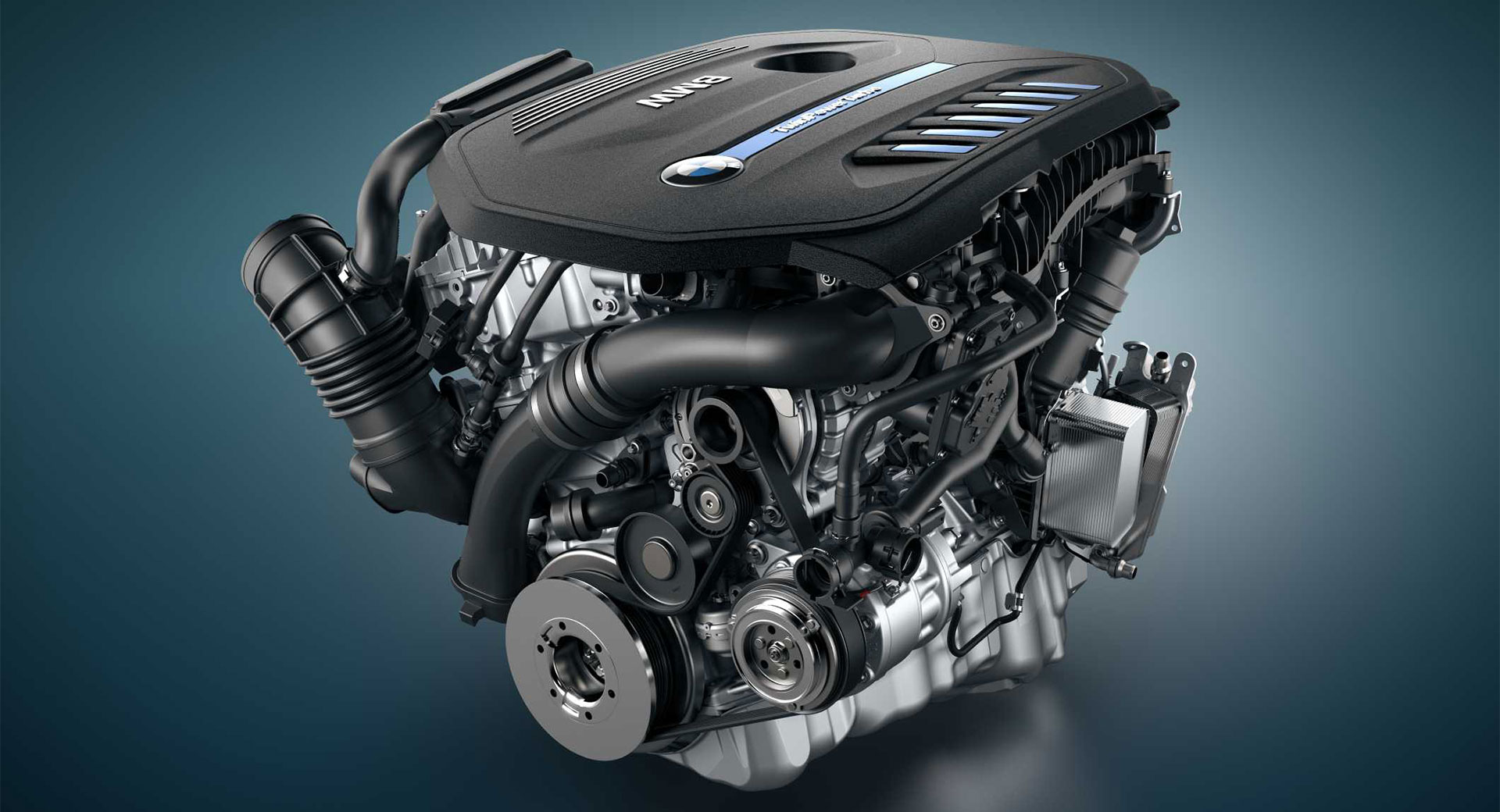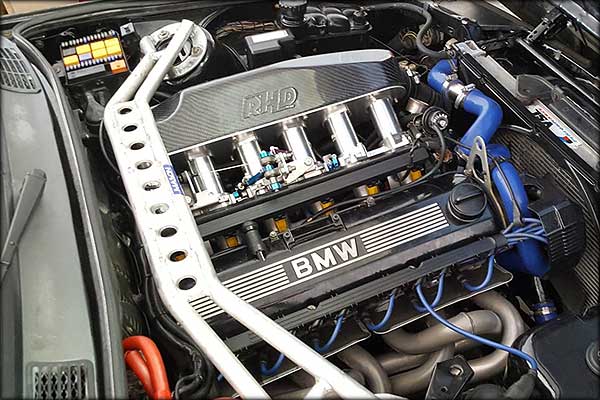A New user's Guide to Selecting the Right BMW Engine for Your Demands
A New user's Guide to Selecting the Right BMW Engine for Your Demands
Blog Article
Unveiling the Intricacies of Next-Generation Power Units: a Deep Study Advanced Engine Technologies and layouts
In the world of auto engineering, the relentless pursuit of sustainability, effectiveness, and efficiency has moved the evolution of power units to unmatched heights. As we depend on the precipice of a new era in transportation, the ins and outs of next-generation engine layouts beckon us to check out the sophisticated technologies and advancements that assure to redefine the driving experience. From innovative products that push the boundaries of resilience and weight reduction to advanced turbocharging and supercharging systems that elevate power result to new levels, each part of these power units holds a key to unlocking the future of auto engineering. Diving deeper right into the worlds of exhaust control, smart engine monitoring systems, and the horizon of power device advancement, we locate ourselves on the cusp of a makeover that assures to reshape the landscape of flexibility as we understand it.
Advancement of Engine Materials

The change in the direction of progressed engine materials has also allowed engineers to create engines with greater power outcomes while keeping gas performance standards. The usage of light-weight products lowers the total weight of the engine, leading to improved gas economic situation and reduced exhausts. In addition, developments in materials innovation have allowed for better thermal management within engines, resulting in boosted reliability and longevity.
Turbocharging and Supercharging Technologies
How do Turbocharging and Supercharging Technologies revolutionize engine performance and performance in contemporary vehicles? Turbo charging and turbocharging are technologies that considerably improve engine performance by enhancing the amount of air intake into the combustion chamber. Turbocharging attains this by making use of a turbine driven by exhaust gases to pressurize the consumption air, while turbo charging uses a belt- or chain-driven compressor to accomplish the very same result.
These technologies make it possible for smaller sized, extra fuel-efficient engines to create power equal to bigger ones, called downsizing. By compeling more air right into the cylinders, turbocharging and supercharging improve burning performance, resulting in increased horse power and torque result without a significant rise in engine dimension. This leads to better velocity, pulling capacity, and overall driving performance.
In addition, supercharging and turbocharging add to enhanced fuel performance by enabling the use of smaller engines that consume much less gas under typical driving conditions - bmw engine. This combination of boosted efficiency and effectiveness has made turbocharging and supercharging integral parts of numerous contemporary engine designs
Emission Control and Environmental Effect
With boosting worldwide concerns relating to air high quality and ecological sustainability, the execution of emission control innovations in vehicles plays an essential role in lowering damaging toxins released into the atmosphere. Modern vehicles are furnished with sophisticated discharge control systems that help lessen the ecological influence of automobile procedures. Catalytic converters, as an example, are created to convert toxic gases such as carbon monoxide gas, nitrogen oxides, and hydrocarbons into less dangerous compounds like co2 and water vapor.
Additionally, improvements in engine innovation, such as the combination of exhaust gas recirculation systems and discerning catalytic reduction, have significantly contributed to decreasing emissions. These modern technologies work in tandem to maximize burning efficiency and reduce the release of dangerous toxins into the air. In addition, the advancement of hybrid and electrical vehicles stands for an essential step in the direction of lowering the overall environmental impact of the transportation industry.
Intelligent Engine Monitoring Solution

Furthermore, these systems enable cars to meet rigid exhausts requirements without jeopardizing performance, supplying a much more ecologically friendly driving experience. The combination of expert system and artificial intelligence capacities in engine management systems remains to push the limits of what is feasible, leading to further improvements in performance, reliability, and total automobile performance. bmw engine. As vehicle technology advances, intelligent engine administration systems will play a critical role in shaping the future of transport in the direction of a much more lasting and efficient instructions
Future Trends in Power Device Advancement
As smart engine monitoring systems lead the way for enhanced control and optimization in contemporary vehicles, future patterns in power unit growth are positioned to redefine the landscape of auto propulsion innovations. Among the vital fads driving advancement in power unit growth is the shift towards electrification. With an increasing focus on sustainability and decreasing carbon emissions, crossbreed and electrical powertrains are ending up being a lot more common in the automotive industry. These different source of power offer boosted performance and efficiency while straightening with rigid environmental guidelines.
Another significant fad is the integration of sophisticated materials and making methods. Light-weight products such as carbon fiber and aluminum are being used to minimize general car weight, enhancing gas effectiveness and efficiency. Furthermore, innovations in page 3D printing and additive manufacturing are making it possible for the manufacturing of complex engine components with greater precision and longevity.
Furthermore, artificial knowledge and device understanding are playing a vital duty in enhancing power unit performance. These innovations allow for real-time monitoring and adaptive control, bring about more effective and dependable power distribution. Overall, future fads in power system growth are geared towards effectiveness, sustainability, and efficiency, driving the auto industry towards a new era of propulsion technologies.

Verdict
In verdict, the innovations in engine products, turbocharging, exhaust control, and intelligent administration systems have led the way for next-generation this hyperlink power units. These advancements have not only improved efficiency and efficiency yet additionally decreased ecological effect. As technology remains to develop, future fads in power device growth are likely to concentrate on more enhancing sustainability and optimizing power result. The detailed styles and technologies in contemporary engines showcase the recurring evolution of automobile innovation.
Discovering the dynamic developments in engine products has been crucial in improving the efficiency and effectiveness of contemporary engines. Over the years, the development of engine products has played a vital function in pressing the limits of what engines can accomplish.The change towards advanced engine materials has additionally enabled designers to create engines with higher power outcomes while keeping gas effectiveness requirements.The implementation of smart engine monitoring systems in modern-day vehicles has changed the way engines are controlled get redirected here and maximized for efficiency and performance. By accumulating information in real-time and evaluating it with innovative algorithms, intelligent engine management systems can adjust to driving styles, environmental variables, and engine health and wellness to take full advantage of power outcome while reducing fuel consumption and emissions.
Report this page